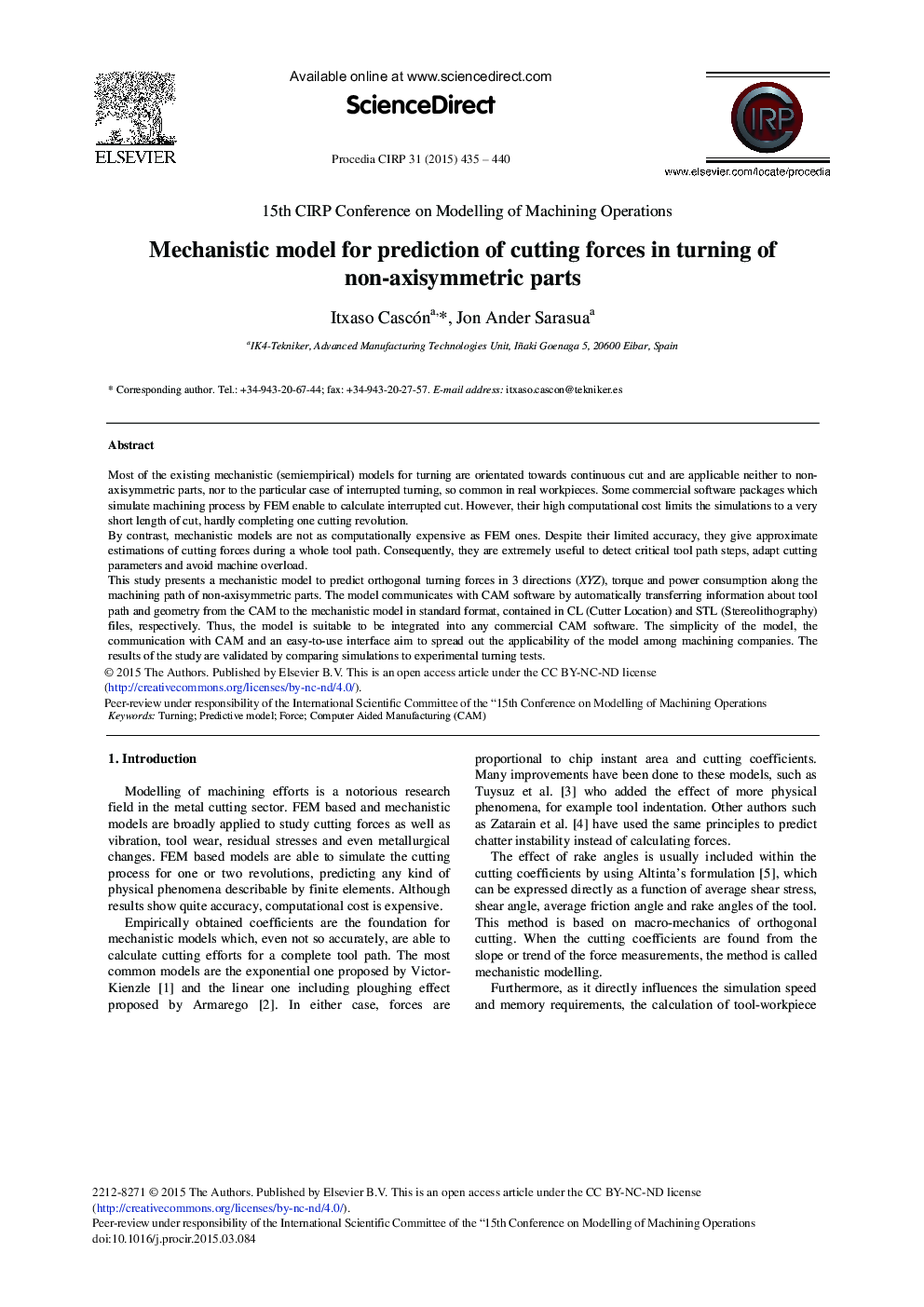| کد مقاله | کد نشریه | سال انتشار | مقاله انگلیسی | نسخه تمام متن |
|---|---|---|---|---|
| 1699675 | 1519321 | 2015 | 6 صفحه PDF | دانلود رایگان |
Most of the existing mechanistic (semiempirical) models for turning are orientated towards continuous cut and are applicable neither to non-axisymmetric parts, nor to the particular case of interrupted turning, so common in real workpieces. Some commercial software packages which simulate machining process by FEM enable to calculate interrupted cut. However, their high computational cost limits the simulations to a very short length of cut, hardly completing one cutting revolution.By contrast, mechanistic models are not as computationally expensive as FEM ones. Despite their limited accuracy, they give approximate estimations of cutting forces during a whole tool path. Consequently, they are extremely useful to detect critical tool path steps, adapt cutting parameters and avoid machine overload.This study presents a mechanistic model to predict orthogonal turning forces in 3 directions (XYZ), torque and power consumption along the machining path of non-axisymmetric parts. The model communicates with CAM software by automatically transferring information about tool path and geometry from the CAM to the mechanistic model in standard format, contained in CL (Cutter Location) and STL (Stereolithography) files, respectively. Thus, the model is suitable to be integrated into any commercial CAM software. The simplicity of the model, the communication with CAM and an easy-to-use interface aim to spread out the applicability of the model among machining companies. The results of the study are validated by comparing simulations to experimental turning tests.
Journal: Procedia CIRP - Volume 31, 2015, Pages 435-440
